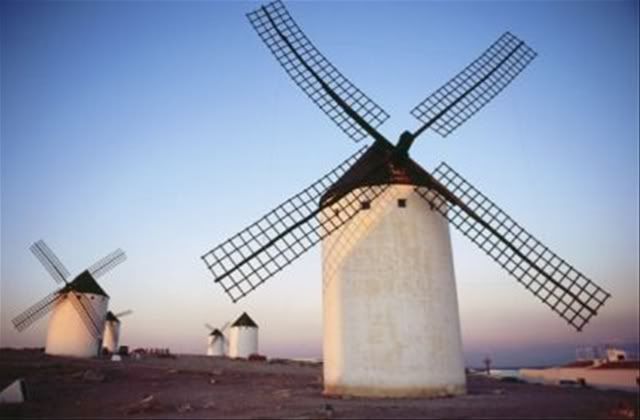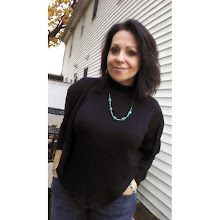
Saturday, May 31, 2008
Monday, May 26, 2008
Sunday, May 25, 2008
Saturday, May 24, 2008
Friday, May 23, 2008
Sunday, May 18, 2008
Saturday, May 17, 2008
Friday, May 16, 2008
Wednesday, May 14, 2008
Saturday, May 10, 2008
Saturday, May 3, 2008
Let's Learn About Spain And Its Food
My favorite restaurant in the closest city nearby is a Spanish one, Bocado Tapas Wine Bar. I have only been there a few times, but after being amazed by the food, I realized that I really know close to nothing about Spanish cooking, as opposed to Mexican and Central American cooking. I'd like to make a generalization here and say that the general population in this area has no idea about this distinction.
Why, just the other morning, I stopped at my local 24 hour Stop and Shop supermarket and I was in the ethnic isle. Their hanging sign called it "Spanish Foods," but I noticed that there isn't a single Spanish food in that isle. It's all Caribbean and Mexican. Interesting....
Other than my few dinners at Bocado, I've watched travel shows in which the hosts visit Spain and eat sardines, octopus, anchovies, and other things that sort of turn me off from the sea. I knew that there just had to be more that I was missing out on. Enter Public Television.
This past February a new series called Made in Spain with José Andrés began showing on PBS. On his Web site, his bio states that he is "internationally recognized culinary innovator best known for bringing both traditional and avant-garde Spanish fare to America." He has been recognized by the James Beard Foundation and has restaurants in Washington, D.C. Oh, and might I add that he was a guest chef and winner on Iron Chef America. Bravo, José!
I've watched the series about five times so far, and I have it set to tape all episodes on my DVR. The episode that I began watching today, titled The Magic of Saffron and Cervantes, is a good one! The episode takes place in the region of Spain called Castilla La Mancha (La Mancha for short), which is the setting for the famous epic Don Quijote (also spelled Don Quixote). In addition to the Manchego cheese that comes from this area, Castilla La Mancha has very well known for its windmills which were used to grind wheat.



Why, just the other morning, I stopped at my local 24 hour Stop and Shop supermarket and I was in the ethnic isle. Their hanging sign called it "Spanish Foods," but I noticed that there isn't a single Spanish food in that isle. It's all Caribbean and Mexican. Interesting....
Other than my few dinners at Bocado, I've watched travel shows in which the hosts visit Spain and eat sardines, octopus, anchovies, and other things that sort of turn me off from the sea. I knew that there just had to be more that I was missing out on. Enter Public Television.
This past February a new series called Made in Spain with José Andrés began showing on PBS. On his Web site, his bio states that he is "internationally recognized culinary innovator best known for bringing both traditional and avant-garde Spanish fare to America." He has been recognized by the James Beard Foundation and has restaurants in Washington, D.C. Oh, and might I add that he was a guest chef and winner on Iron Chef America. Bravo, José!
I've watched the series about five times so far, and I have it set to tape all episodes on my DVR. The episode that I began watching today, titled The Magic of Saffron and Cervantes, is a good one! The episode takes place in the region of Spain called Castilla La Mancha (La Mancha for short), which is the setting for the famous epic Don Quijote (also spelled Don Quixote). In addition to the Manchego cheese that comes from this area, Castilla La Mancha has very well known for its windmills which were used to grind wheat.


Spain is located on the Iberian Peninsula, which it shares with Portugal. Politically, it has 17 regions (autonomous communities). Castilla la Mancha is the big, yellow one in the center.

But each of those regions gets further broken down into a total of 50 administrative provinces.
How timely, because I am also just starting to read a Spanish comic book version of Don Quijote de la Mancha so I can teach it to my students and have them read it. I am going to burn a DVD with this episode and share clips of it with my students so they can have a more enriching experience. The clips I'll show have examples of language, scenery, and lifestyle. Maybe I'll even share this dish for a tomato and manchego salad that I got from the episode with them.
Friday, May 2, 2008
Subscribe to:
Comments (Atom)
